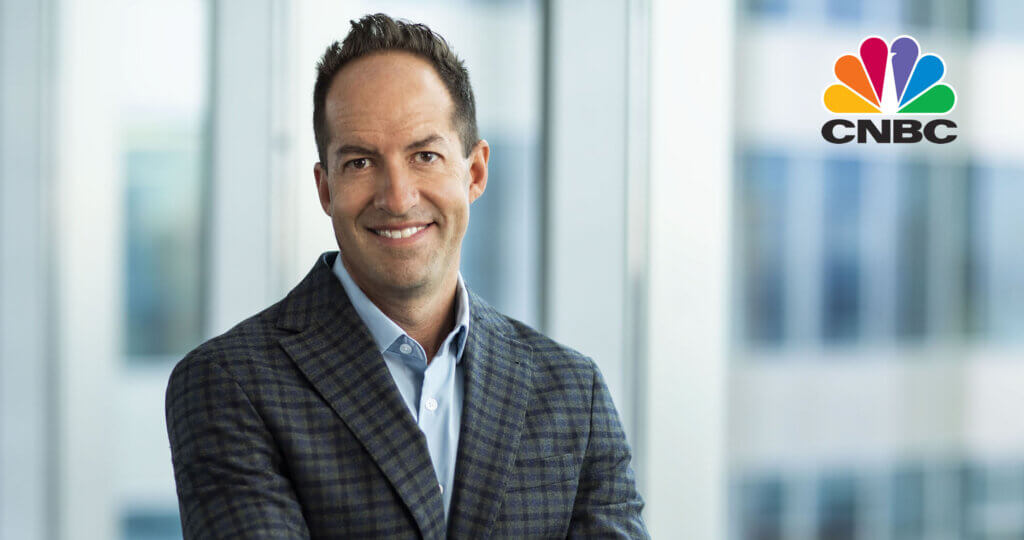
When new Harris Associates employees join the sales and client service team, we have them read William N. Thorndike’s book, The Outsiders.1 Thorndike’s eight chapters about unconventional CEOs and their recipes for success contain great examples of what our team looks for in people running a business: strong management teams that make good long-term capital allocations that benefit shareholders.
The chapter, “The Widow Takes the Helm,” focuses on Katharine Graham and The Washington Post Company. At the age of 46 and not having fully worked for about 20 years, she was thrust into the CEO role after her husband Phil suddenly died in 1963. Early on in Graham’s tenure, she started making capital allocation decisions, including the one to take the company public in 1971. One of the main reasons for the initial public offering (IPO) was to raise capital for acquisitions. After receiving the IPO proceeds, Graham and the company looked closely at multiple potential purchases in the consolidating television and newspaper industry. When not able to find companies at a good purchase price, she decided to invest in the company that she knew the best: The Washington Post.
In Graham’s autobiography, Personal History,2 she highlights her dialogues over the years with Warren Buffett. Early on in their relationship, Buffett wrote a positive letter indicating his intention to purchase 5% or more of The Washington Post, signaling his faith in her and the company:
“This purchase represents a sizable commitment to — and an explicitly quantified compliment to the Post as a business enterprise and to you as its chief executive. Writing a check separates conviction from conversation.”
With investors the caliber of Buffett telling her how undervalued the company’s stock was, The Washington Post bought back 45% of the outstanding shares over the next 20 years rather than overpaying for acquisitions when prices weren’t right.
When sentiment for media companies turned positive in the 1980s, Graham sold slower growing businesses, such as the Trenton Times and Inside Sports, which had lost a lot of money and showed few signs of possible improvement. Selling these two properties significantly reduced near-term earnings, but allowed the company to focus on core businesses, which by then were setting new records for revenue.
About a decade later, Graham utilized the now stronger earnings and balance sheet of The Washington Post to selectively purchase companies. In the mid-1980s, it acquired several fast-growing businesses, including the Stanley H. Kaplan Company (later Kaplan Education Centers). According to Graham, the company’s most spectacular success was the purchase of 53 cable systems from Capital Cities Communications. By adding new customers and purchasing other small systems, Post-Newsweek cable subscribers grew significantly into the 1990s.
Current management teams that we consider good capital allocators, like Graham, include those at TE Connectivity, Charter Communications and DSV A/S. The leadership team at TE Connectivity has effectively whittled the company down to secularly advantaged businesses that benefit from the growth of electric vehicles, factory automation and high-speed data. TE Connectivity’s growth per share has been amplified through stock buybacks as management has used the strong cash flow and proceeds from divestitures to retire 40% of the original outstanding stock. Since 2016, Charter Communications has also significantly reduced its share count by around 45% through a significant buyback program. Our estimate of economic EBITA for Charter is up approximately 50% over these past six years.
Based in Denmark, DSV A/S (DSV) has a great track record of buying and integrating businesses into its freight forwarding business. The acquisitions of UTi Worldwide, Panalpina and, most recently, Agility’s Global Integrated Logistics (GIL) allowed DSV to reach immense scale as a clear #3 in the market behind DHL and Kuehne + Nagel. Through its rigorous focus on integration, expense control and IT, the long-tenured management team at DSV has utilized this scale to extract synergies and consistently produce industry-leading profitability and cash generation. DSV is also a regular repurchaser of its own shares and runs with a very efficient balance sheet. At the time of the GIL purchase, DSV issued equity that we believe was fully valued, thereby avoiding value dilution for shareholders. By weighing many alternatives and allocating capital toward where it can earn the highest return, DSV continues to maximize shareholder value, in our view.
From the time The Washington Post went public in 1971 until Katharine Graham stepped down as chair in 1993, the compound annual return to shareholders was 22.3% annualized versus a 7.4% return for the S&P 500 Index. Since the founding of our firm in 1976, we are on the constant lookout for leaders like Graham who focus on smart capital allocation decisions on behalf of shareholders.
1Thorndike, William N. The Outsiders. Harvard Business Review Press. Brighton. 2012.
2Graham, Katharine. Personal History. Vintage. New York. 1998.
Investing in value stocks presents the risk that value stocks may fall out of favor with investors and underperform growth stocks during given periods.
Investing involves risk, including the risk of loss. Sustainable investing focuses on investments in companies that relate to certain sustainable development themes and demonstrate adherence to environmental, social and governance (ESG) practices; therefore the universe of investments may be limited and investors may not be able to take advantage of the same opportunities or market trends as investors that do not use such criteria. This could have a negative impact on an investor’s overall performance depending on whether such investments are in or out of favor.
The information, data, analyses, and opinions presented herein (including current investment themes, the portfolio managers’ research and investment process, and portfolio characteristics) are for informational purposes only and represent the investments and views of the portfolio managers and Harris Associates L.P. as of the date written and are subject to change and may change based on market and other conditions and without notice.
Certain comments herein are based on current expectations and are considered “forward-looking statements”. These forward looking statements reflect assumptions and analyses made by the portfolio managers and Harris Associates L.P. based on their experience and perception of historical trends, current conditions, expected future developments, and other factors they believe are relevant. Actual future results are subject to a number of investment and other risks and may prove to be different from expectations. Readers are cautioned not to place undue reliance on the forward-looking statements.
Statements concerning financial market trends or other investment strategies are based on current market conditions, which will fluctuate. There is no guarantee that these investment strategies will work under all market conditions or are appropriate for all investors. Each investor should evaluate their ability to invest for the long term, especially during periods of downturn in the market. Market outlook and investment strategies are subject to change without notice.







